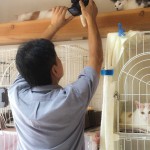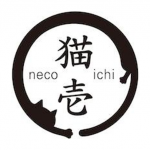Introduction
Have you ever wondered what units Russian facial options apart from these of different nationalities? Well, you’re in luck! In this article, we’ll delve into the fascinating world of Russian facial features and explore what makes them unique. So, let’s get started!
The Melting Pot of Cultures
Russia is the most important country on the earth, spanning across two continents and incorporating a diverse vary of ethnicities. From the fair-skinned Slavic peoples to the darker-skinned Caucasians within the southern regions, Russian facial options replicate this rich mosaic of cultures.
When you journey across Russia, you’ll encounter a novel blend of facial traits that change from region to area. Just as the landscape modifications from the huge plains of Siberia to the snow-capped mountains of the Caucasus, so too do the facial options of the people who call these locations home.
Slavic Origins
Slavic folks type the majority ethnic group in Russia, giving rise to lots of the widespread facial options associated with Russians. These features embrace:
- Light colored eyes: Blue and green eyes are common amongst Slavic people, making a hanging contrast in opposition to their fair skin.
- Round faces: Slavic faces tend to be spherical or oval-shaped, with excessive cheekbones that give them an virtually doll-like appearance.
- Light-colored hair: Blonde and lightweight brown hair are prevalent amongst Slavic individuals, though darker hair colours are also seen.
- Narrow, straight noses: Slavic noses are usually narrow and straight, contributing to the overall symmetry of their faces.
The Uralics and Turkics
In addition to the Slavic peoples, Russia is also house to numerous Uralic and Turkic ethnic groups, which add their own unique facial options to the combo. These teams embody the Finno-Ugric peoples, such as the Karelians and the Sami, as well as the Turkic-speaking Tatars and Kazakhs.
- Almond-shaped eyes: Turkic and Uralic individuals often have almond-shaped eyes, which give their faces an unique attract.
- Darker pores and skin tones: Compared to their Slavic counterparts, Uralic and Turkic people are most likely to have barely darker pores and skin tones, reflecting the affect of their Asian and Central Asian roots.
- Thicker, extra outstanding eyebrows: The Uralic and Turkic individuals usually have thicker and more prominent eyebrows, framing their eyes and including depth to their facial expressions.
The Impact of Geography
Russia’s vast dimension and geographical diversity have also left their mark on the facial features of its individuals. Let’s discover the influence of geography on Russian facial options:
The Northern Regions
In the northern areas of Russia, where the local weather is harsh and the winters are lengthy, people have adapted to their environment over generations. As a end result, you will find certain facial features that are more prevalent in these areas:
- Pale skin: The restricted publicity to daylight leads to fairer skin tones among those dwelling in the north. This adaptation helps to maximise vitamin D absorption.
- Chubby cheeks: To fight the cold, people in northern regions often develop fuller cheeks, which give natural insulation.
The Southern Regions
Conversely, in the southern areas of Russia, the place the local weather is hotter and extra Mediterranean-like, completely different facial options dominate:
- Olive pores and skin tones: The proximity to Central Asia and the Caucasus has influenced the traits of people in southern Russia. Many people have olive-toned pores and skin, which helps shield against the strong sun.
- Dark, curly hair: The warmer local weather has led to the next prevalence of dark, curly hair among the many people in these regions.
The Beauty of Diversity
Russian facial options are as diverse because the nation itself. With influences from Slavic, Uralic, Turkic, and geographic components, there is no one "typical" Russian face. Instead, what you may find is a beautiful medley of options that make every individual distinctive.
Just like a Russian nesting doll, the place each layer reveals a smaller doll inside, Russian facial features are like layers of historical past, tradition, and genetics. They tell a narrative of the countless individuals who have crossed paths and mingled over centuries, leaving their mark on the faces and identities of the Russian folks.
Conclusion
In conclusion, Russian facial options are a pleasant mixture of Slavic, Uralic, Turkic, and geographic influences. From the honest pores and skin and light-colored eyes of Slavic people to the almond-shaped eyes and darker skin tones of their Uralic and Turkic counterparts, the range of Russian faces is a mirrored image of the country’s rich history and cultural tapestry.
Next time you encounter a Russian individual, take a moment to appreciate the unique mix of options that make them who they’re. Just just like the unique patterns on a matryoshka doll, Russian faces are a testomony to the beauty of diversity.
FAQ
Q: What are some widespread facial options of Russian people?
A: Russian folks, like all other ethnic teams, have a diverse range of facial features. However, there are particular characteristics that can be generally seen among Russian people. Some outstanding facial features include:
1. Fair skin: Fair or pale skin is usually related to the ancestral heritage of Russian people. This is due to the colder local weather of the region and the necessity for lighter skin to soak up vitamin D from scarce sunlight.
2. Slavic facial structure: Many Russians have a Slavic facial structure, characterized by excessive cheekbones, a straight nose, and a well-defined jawline.
3. Light-colored eyes: Blue or green eyes are sometimes seen in Russians. While brown eyes are also frequent, light-colored eyes are more prevalent in this ethnic group.
4. Straight or wavy hair: Straight or slightly wavy hair is frequent among Russians, although some individuals might have curly hair as well. Hair color can differ from light blonde to dark brown.
5. Large noses: It isn’t uncommon to see Russians with larger noses, which can be straight or barely hooked. This function is extra noticeable among people from sure regions.
Q: Are these facial features exclusive to Russian folks alone?
A: No, these facial options aren’t unique to Russian folks alone. Many of those traits may also be found in other Slavic ethnic groups because of shared ancestry. Additionally, there are numerous ethnicities within Russia itself, with people of Central Asian, East Asian, and Caucasian origins residing in the nation. These ethnic teams can exhibit a variety of various facial features, making it tough to define a singular set of features for Russian people as an entire.
Q: Are there any historical or geographical causes behind these options among Russian people?
A: The historic and geographical factors have indeed influenced the facial features seen amongst Russian individuals. The Slavic population, from which Russians descend, has a protracted history within the region. Throughout the centuries, intermixing with neighboring populations and migrations have formed the genetic makeup of the Russian people. The relatively colder local weather of the region also performed a job in developing certain options, similar to honest pores and skin, as an adaptation to restricted sunlight. However, you will need to observe that particular person variation in facial options is extensive, and not all Russians match these generalizations.
Q: How does the cultural variety inside Russia have an result on the facial options of its people?
A: The cultural variety within Russia contributes to the various vary of facial features observed amongst its folks. Due to its huge russian facial features territory, Russia is residence to numerous ethnic teams, each with their distinct bodily traits. For example, individuals from Central Asia could have darker pores and skin, totally different eye shapes, and different hair textures compared to individuals from European Russia. Migration patterns all through historical past have led to intermixing, leading to a fascinating blend of options throughout the Russian inhabitants.
Q: What role does genetics play in determining facial features among Russian people?
A: Genetics plays a major role in determining facial options amongst Russian folks, simply as it does in some other inhabitants. Facial options are influenced by a complex interplay of multiple genes, making it a polygenic trait. Genetic variations from both dad and mom contribute to the development of options like eye shade, hair texture, and even the form of the nose. However, you will want to observe that genetics alone can’t precisely predict or outline the facial features of a person or a particular ethnic group. Environmental elements, cultural interactions, and random genetic mutations also contribute to the big selection of features seen within a inhabitants.
Introduction
Have you ever wondered what units Russian facial options apart from these of different nationalities? Well, you’re in luck! In this article, we’ll delve into the fascinating world of Russian facial features and explore what makes them unique. So, let’s get started!
The Melting Pot of Cultures
Russia is the most important country on the earth, spanning across two continents and incorporating a diverse vary of ethnicities. From the fair-skinned Slavic peoples to the darker-skinned Caucasians within the southern regions, Russian facial options replicate this rich mosaic of cultures.
When you journey across Russia, you’ll encounter a novel blend of facial traits that change from region to area. Just as the landscape modifications from the huge plains of Siberia to the snow-capped mountains of the Caucasus, so too do the facial options of the people who call these locations home.
Slavic Origins
Slavic folks type the majority ethnic group in Russia, giving rise to lots of the widespread facial options associated with Russians. These features embrace:
- Light colored eyes: Blue and green eyes are common amongst Slavic people, making a hanging contrast in opposition to their fair skin.
- Round faces: Slavic faces tend to be spherical or oval-shaped, with excessive cheekbones that give them an virtually doll-like appearance.
- Light-colored hair: Blonde and lightweight brown hair are prevalent amongst Slavic individuals, though darker hair colours are also seen.
- Narrow, straight noses: Slavic noses are usually narrow and straight, contributing to the overall symmetry of their faces.
The Uralics and Turkics
In addition to the Slavic peoples, Russia is also house to numerous Uralic and Turkic ethnic groups, which add their own unique facial options to the combo. These teams embody the Finno-Ugric peoples, such as the Karelians and the Sami, as well as the Turkic-speaking Tatars and Kazakhs.
- Almond-shaped eyes: Turkic and Uralic individuals often have almond-shaped eyes, which give their faces an unique attract.
- Darker pores and skin tones: Compared to their Slavic counterparts, Uralic and Turkic people are most likely to have barely darker pores and skin tones, reflecting the affect of their Asian and Central Asian roots.
- Thicker, extra outstanding eyebrows: The Uralic and Turkic individuals usually have thicker and more prominent eyebrows, framing their eyes and including depth to their facial expressions.
The Impact of Geography
Russia’s vast dimension and geographical diversity have also left their mark on the facial features of its individuals. Let’s discover the influence of geography on Russian facial options:
The Northern Regions
In the northern areas of Russia, where the local weather is harsh and the winters are lengthy, people have adapted to their environment over generations. As a end result, you will find certain facial features that are more prevalent in these areas:
- Pale skin: The restricted publicity to daylight leads to fairer skin tones among those dwelling in the north. This adaptation helps to maximise vitamin D absorption.
- Chubby cheeks: To fight the cold, people in northern regions often develop fuller cheeks, which give natural insulation.
The Southern Regions
Conversely, in the southern areas of Russia, the place the local weather is hotter and extra Mediterranean-like, completely different facial options dominate:
- Olive pores and skin tones: The proximity to Central Asia and the Caucasus has influenced the traits of people in southern Russia. Many people have olive-toned pores and skin, which helps shield against the strong sun.
- Dark, curly hair: The warmer local weather has led to the next prevalence of dark, curly hair among the many people in these regions.
The Beauty of Diversity
Russian facial options are as diverse because the nation itself. With influences from Slavic, Uralic, Turkic, and geographic components, there is no one "typical" Russian face. Instead, what you may find is a beautiful medley of options that make every individual distinctive.
Just like a Russian nesting doll, the place each layer reveals a smaller doll inside, Russian facial features are like layers of historical past, tradition, and genetics. They tell a narrative of the countless individuals who have crossed paths and mingled over centuries, leaving their mark on the faces and identities of the Russian folks.
Conclusion
In conclusion, Russian facial options are a pleasant mixture of Slavic, Uralic, Turkic, and geographic influences. From the honest pores and skin and light-colored eyes of Slavic people to the almond-shaped eyes and darker skin tones of their Uralic and Turkic counterparts, the range of Russian faces is a mirrored image of the country’s rich history and cultural tapestry.
Next time you encounter a Russian individual, take a moment to appreciate the unique mix of options that make them who they’re. Just just like the unique patterns on a matryoshka doll, Russian faces are a testomony to the beauty of diversity.
FAQ
Q: What are some widespread facial options of Russian people?
A: Russian folks, like all other ethnic teams, have a diverse range of facial features. However, there are particular characteristics that can be generally seen among Russian people. Some outstanding facial features include:
1. Fair skin: Fair or pale skin is usually related to the ancestral heritage of Russian people. This is due to the colder local weather of the region and the necessity for lighter skin to soak up vitamin D from scarce sunlight.
2. Slavic facial structure: Many Russians have a Slavic facial structure, characterized by excessive cheekbones, a straight nose, and a well-defined jawline.
3. Light-colored eyes: Blue or green eyes are sometimes seen in Russians. While brown eyes are also frequent, light-colored eyes are more prevalent in this ethnic group.
4. Straight or wavy hair: Straight or slightly wavy hair is frequent among Russians, although some individuals might have curly hair as well. Hair color can differ from light blonde to dark brown.
5. Large noses: It isn’t uncommon to see Russians with larger noses, which can be straight or barely hooked. This function is extra noticeable among people from sure regions.
Q: Are these facial features exclusive to Russian folks alone?
A: No, these facial options aren’t unique to Russian folks alone. Many of those traits may also be found in other Slavic ethnic groups because of shared ancestry. Additionally, there are numerous ethnicities within Russia itself, with people of Central Asian, East Asian, and Caucasian origins residing in the nation. These ethnic teams can exhibit a variety of various facial features, making it tough to define a singular set of features for Russian people as an entire.
Q: Are there any historical or geographical causes behind these options among Russian people?
A: The historic and geographical factors have indeed influenced the facial features seen amongst Russian individuals. The Slavic population, from which Russians descend, has a protracted history within the region. Throughout the centuries, intermixing with neighboring populations and migrations have formed the genetic makeup of the Russian people. The relatively colder local weather of the region also performed a job in developing certain options, similar to honest pores and skin, as an adaptation to restricted sunlight. However, you will need to observe that particular person variation in facial options is extensive, and not all Russians match these generalizations.
Q: How does the cultural variety inside Russia have an result on the facial options of its people?
A: The cultural variety within Russia contributes to the various vary of facial features observed amongst its folks. Due to its huge russian facial features territory, Russia is residence to numerous ethnic teams, each with their distinct bodily traits. For example, individuals from Central Asia could have darker pores and skin, totally different eye shapes, and different hair textures compared to individuals from European Russia. Migration patterns all through historical past have led to intermixing, leading to a fascinating blend of options throughout the Russian inhabitants.
Q: What role does genetics play in determining facial features among Russian people?
A: Genetics plays a major role in determining facial options amongst Russian folks, simply as it does in some other inhabitants. Facial options are influenced by a complex interplay of multiple genes, making it a polygenic trait. Genetic variations from both dad and mom contribute to the development of options like eye shade, hair texture, and even the form of the nose. However, you will want to observe that genetics alone can’t precisely predict or outline the facial features of a person or a particular ethnic group. Environmental elements, cultural interactions, and random genetic mutations also contribute to the big selection of features seen within a inhabitants.
















